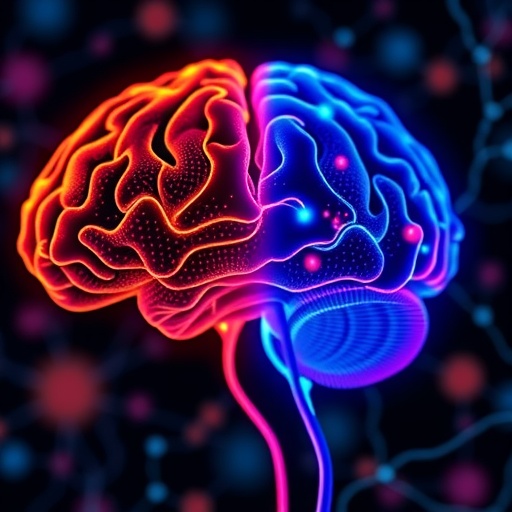Research emerging from the Okinawa Institute of Science and Technology (OIST) reveals a groundbreaking insight into the shared biological mechanisms underpinning Parkinson’s and Alzheimer’s diseases, two of the most prevalent neurodegenerative disorders affecting millions globally. Published in the renowned Journal of Neuroscience, this study unveils a common molecular pathway responsible for synaptic dysfunctions, thereby providing a deeper understanding of the symptomatic expressions associated with both disorders. By exploring the intricate dynamics of brain cell communication, the authors have pinpointed how misfolded proteins disrupt essential neuronal activities, opening the door for potential therapeutic avenues.
The crux of the researchers’ investigation lies in examining the communication breakdown between neurons across synaptic clefts, a critical aspect of brain function. When proteins associated with Alzheimer’s and Parkinson’s diseases accumulate, they wreak havoc on synaptic vesicle recycling, a process vital for efficient neurotransmission. This study identifies how disease-related proteins can significantly hinder the recycling process, leading to a cascade of synaptic dysfunction. Dr. Dimitar Dimitrov, the lead author of the study, emphasizes the implications these findings hold for understanding the disparate symptoms observed in both diseases, suggesting that interference in one neuronal circuit may manifest as memory impairment, while disruption in another may compromise motor control.
Neurotransmitters act as the brain’s chemical messengers, and their effective signaling depends heavily on the proper functioning of synaptic vesicles. These tiny, membranous packets encompass the neurotransmitters and play a crucial role in ensuring their transport and release. The dynamics of synaptic vesicle retrieval are thus fundamental to neuronal signaling. Without this intricate recycling mechanism, the stability and efficiency of communication between brain cells are compromised, producing profound effects on cognitive and motor functions.
The research underscores a specific molecular cascade that interferes with the retrieval of emptied vesicles crucial for maintaining neurotransmitter availability. As excess disease-related proteins accumulate within brain cells, they trigger an overproduction of microtubules, which are essential structural components of cells. However, when microtubules become overabundant, they can entrap critical proteins like dynamin. This protein is vital for the retrieval of synaptic vesicles, and its scarcity can severely affect the recycling process, thus inhibiting neuronal signaling and communication.
Moving beyond just elucidating the underlying mechanisms, this study has broader therapeutic implications for the treatment of Alzheimer’s and Parkinson’s diseases. By uncovering this shared biological pathway, the researchers have highlighted multiple pharmacological targets. Strategies to prevent protein accumulation, inhibit microtubule overproduction, or disrupt the binding of microtubules to dynamin could potentially pave the way for new treatment avenues. Such therapeutic interventions might alleviate some of the most debilitating effects faced by patients battling these neurodegenerative conditions.
The ongoing efforts of the OIST research team build upon a robust foundation of previous work exploring the role of microtubules in Parkinson’s disease and the interaction of dynamin with tau proteins in the context of Alzheimer’s disease. Their sustained inquiry into these mechanisms reflects a commitment to unraveling the complexities of neurodegenerative disorders. Moreover, recent studies suggest that a peptide designed to counteract synaptic damage caused by Alzheimer’s may also hold promise for ameliorating symptoms associated with Parkinson’s disease, hinting at an overlap in treatment strategies for these distinct yet interconnected afflictions.
In conclusion, the insights from this research elevate our understanding of the molecular underpinnings of both Alzheimer’s and Parkinson’s diseases, drawing connections that could inform upcoming therapeutic designs. The concept of a shared mechanism offers a refreshing perspective and underscores the potential for developing holistic approaches to treatment. As scientists continue to explore these molecular intricacies, patients and families affected by these diseases may soon witness advancements that could profoundly improve quality of life and daily functioning. The journey to unravel the complexities of the brain is far from over, but studies like this are crucial stepping stones toward creating effective interventions.
This groundbreaking study not only enriches our comprehension of synaptic dysfunction in neurodegenerative diseases but also marks a significant advancement in establishing a framework for future research endeavors focused on finding effective treatments. As we gather knowledge about the shared molecules and pathways involved, it becomes increasingly plausible to formulate effective therapeutic strategies that could potentially counteract the debilitating symptoms of these conditions, ultimately reshaping the therapeutic landscape for those affected.
Subject of Research: Cells
Article Title: Common Mechanism Underlying Synaptic Dysfunction Caused by Preformed Fibril-Induced Accumulation of α-Synuclein or Tau in a Culture Propagation Model
News Publication Date: 30-Sep-2025
Web References: OIST News Center
References: N/A
Image Credits: Credit: Kaori Serakaki/OIST




